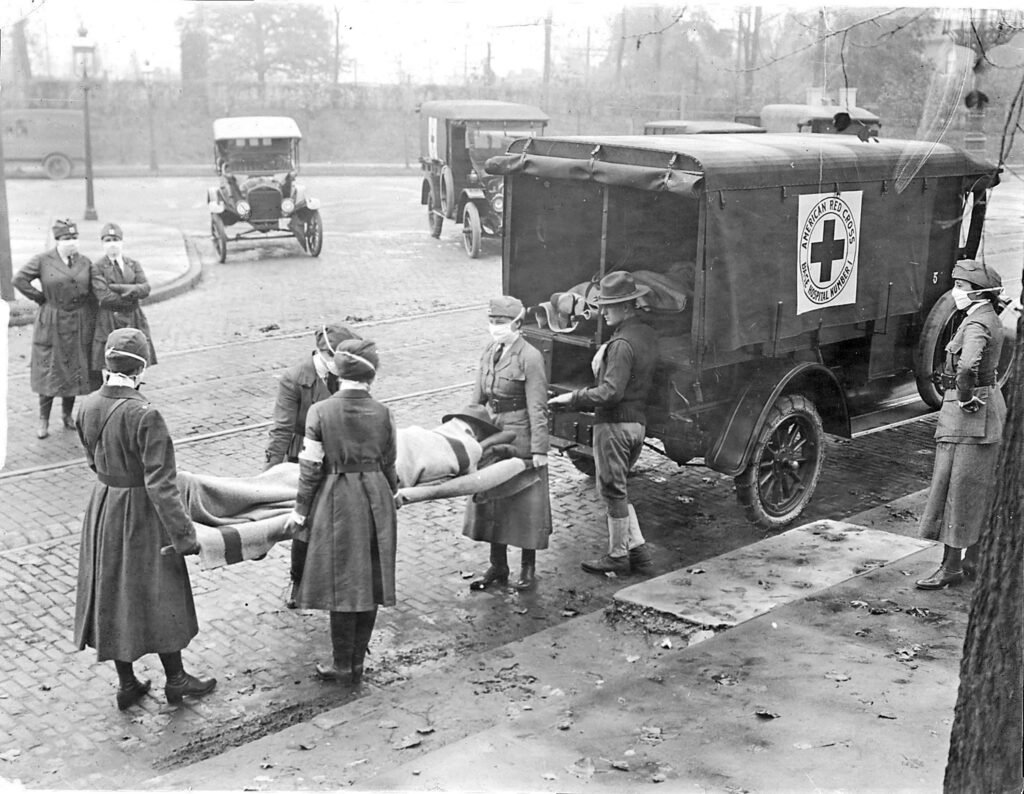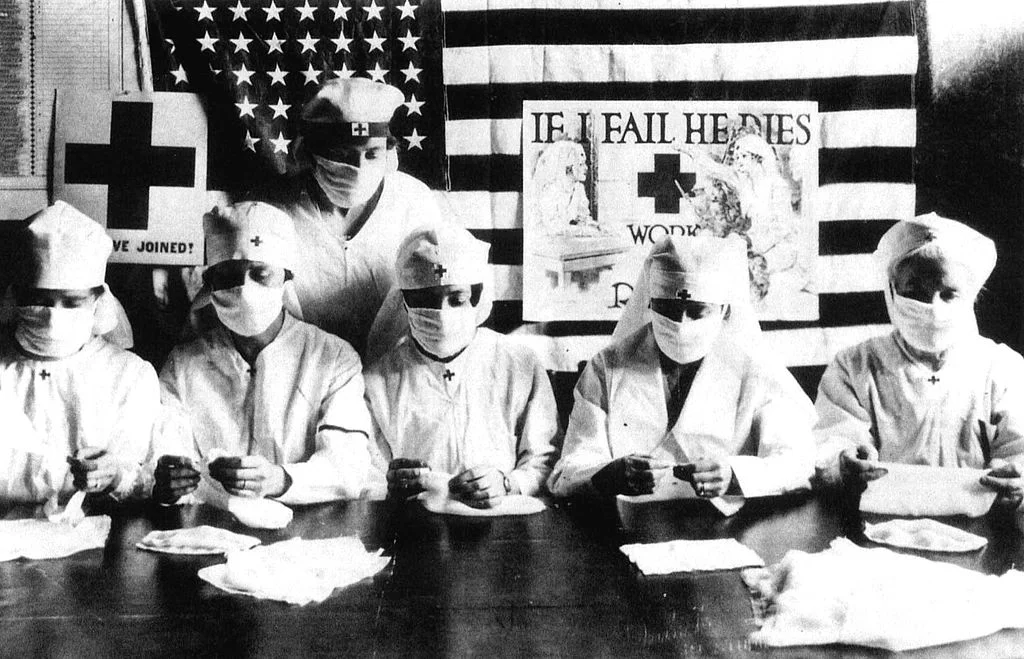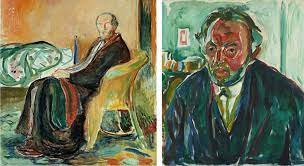The First World War stands as one of the deadliest anthropogenic events (events originating from humans) of all time with as many as 22 million people perhaps dying globally amidst the war; with an average of over 10,000 deaths per day. What may have been four times deadlier with the highest estimate of 100 million deaths was the 1918 influenza pandemic, which in the space of just two years wiped out potentially over 5% of the population worldwide. This is the Spanish Flu.
What Is The Spanish Flu?
The Spanish Flu is the second deadliest pandemic in human history, caused by the spread of the HINI influenza A virus towards the end of WW1 and lasted until early into the next decade.

Although garnering the Spanish Flu name, this name is a misnomer, coming from WW1 neutral Spain, who was one of the most prominent nations to report on it. Both the Central Powers and Entente Powers did not want to report to not hinder morale or show the impact of the enemy side so reports were suppressed, only exacerbating the issue. Spain’s free reporting has led to false claims it was the epicentre when the earliest cases were actually in Kansas.
The name changes accordingly depending on the country and the country’s historical context.
“The Angel Of Death Spread His Wings”
This virus was denoted by its symptoms including high fever, diarrhoea, ear ache, vomiting, and body fatigue although this changed from patient to patient.

Dark spots would surface before the deoxygenated skin turned blue or purple, before suffocation on their own fluids which may protrude from their nose and ears. As US Army doctor Roy Grist remarked: “It is only a matter of hours until death comes and it is simply a struggle for air until they suffocate.” Some reports signal people drowning in their own phlegm.
Amidst the turmoil and hubbub of the war, the disease spread further and further without awareness, within a few months the Flu was in Africa and Asia, with new cases in Japan, Australia, and India.
What became apparent that separated this from other pandemics is that the victims were not just infants and the elderly but also healthy men between 20-40, who were war-weary.
In all, the second wave was the deadliest, which occurred in late 1918. October of that year had the highest fatality rate, with nearly 300,000 deaths in the US from September-December. The effects of the pandemic were most unrelenting in India. India had over a quarter of a billion population by 1918, with the last quarter of 1918 alone seeing as many as 20 million deaths. In the US, 195,000 people died in one of the deadliest months in US history with life expectancy dropping by 12 years.

St. John’s College Historian of Medicine Dr Mary Dobson claimed: “This virus killed more people in the first 25 weeks than HIV/AIDS has killed in 25 years…horrendous. And those mortality statistics are staggering.”
Even sadder was pregnant women suffered with children born durign this era being birthed with disabilities, notably Rosemary Kennedy – who was later a victim of a lobotomy and institutionalised.
Cases & Reactions
Famous figures were not immune, suffering from the Spanish Flu, including leaders of the USA (Woodrow Wilson), Britain (David Lloyd George), Spain (King Alfonso XIII), and Germany (Kaiser Wilhelm) amongst other nations; other survivors include Walt Disney and Gandhi.
One of the most famous depictions is from sufferer Edvard Munch, in the appropriately-titled Self-Portrait With Spanish Flu.

Some were less fortunate including father of sociology Max Weber (aged 56), Brazilian prime minister Francisco de Paula Rodrigues Alves (aged 70), and Austrian painter Gustav Klimt (aged 55).
Naturally, many people claimed to have the cure for the virus. Everything from quinine to iodine. Keep in mind the infancy stage the world was at with medicine, with some even advising smoking, as inhaling smoke may have killed germs.
Spanish doctor Professor Sacone incorrectly claimed: “el germen que da origin a la enfermedad ha sido aislado”, explaining he had isolated the causing germ in the disease. Yet the strain causing the Flu – AH1N1 was not discovered until 1943 with a genetic sequence only identified in 2005.
More outlandish theories became the norm, especially with the unknowing of the spread of disease and global virginity to closely-inspecting microscopes. One of these were gas clouds from Germany or German company Beyer infecting their aspirin.
Comparisons To Covid-19
A lot of people draw comparisons between the Spanish Flu and Covid-19 but the truth is that really you could compare Spanish Flu to any virus – for the most part that is.

(Photo courtesy of The New Yorker)
Both saw required mask wearing. A 1918 article in The Washington Times tells us The Red Cross recommended mask wearing to “halt the exhaling and inhaling of the influenza germ”, with masks five inches wide and six across. “Mask Slackers” were fined $5 if masks were not worn. The Covid pandemic saw both the World Health Organization and Centers for Disease Control and Prevention both champion mask-wearing when in public and indoors to reduce the effects of Coronavirus.
Spanish newspapers also commented on a German trick which helped keep flu deaths before the war the lowest in Europe: disinfecting. In 2020, hand-washing and/or use of hand sanitizer became compulsory in public as the virus may be transmitted from hand to face.
Isolation was also put in practice – actually one of the main ways of tackling the virus as no vaccine or antibiotics were created in this time. Also, public gatherings such as schools, churches, and activities involving room-sharing were shut down, depending on the severity of the Flu in that location.
People in both timelines also arguably risked the health of others by underplaying the role of the virus. In September 1918, Philadelphia Health Director Wilmer Krusen said: “No concern whatever is felt.” Donald Trump made many lukewarm or generally unsupportive claims of mask-wearing, including saying he himself would prefer not to wear one as they may be “not so good.”

In slightly more compelling links, both have potential origins in China. Whilst the 2020 Covid-19 pandemic is thought to have broken out at a Chinese wet market in Wuhan, there is still ambiguity around its origins. High-profile figures such as Claude Hannoun and Mark Humphries have identified China as perhaps first wielding the disease, although an outsider interpretation. This links back to a 1917 respiratory illness that perhaps spread. The Spanish Flu had a low death rate in China, perhaps hinting at an earlier immunity.
Also, Covid-19 took over the world in 2020, taking effect memorably in March 2020 in which many lockdowns took place and ravaging the world in April 2020. When did the Spanish Flu die out? April 1920. Coincidence? Yes, but it is nonetheless a fascinating phenomenon, especially with further illnesses impacting the world in both 1720 with the Great Plague of Marseille and 1820 when cholera was mid-way through its destruction of, most notably, Asia.
Epilogue
It is unbelievable to think an event like this 100 years ago completely turned the world upside down and the long shadow of the First World War has somehow left this influenza pandemic in its long shadow.
This is despite the fact that, in a time of hectic global relations and global strife, the Spanish Flu is thought to have killed about three times as many people as World War One, with a conservative 17 million deaths to 100 million on the further side. 675,000 Americans died from the Flu; 116,000 died in WW1. All deaths of American soldiers in the 20th century is only 619,000 – less than the Spanish Flu.
For us in the current day, Covid-19 has left its mark and will undoubtedly be long-lasting and felt for many decades afterwards. Coronavirus will leave the world a permanently changed place. Yet it is nothing to the mighty grim nature of the Spanish Flu which left many suffering in its path of destruction.
As DrPH Barbara K. Rimer said: “The 1918 influenza pandemic was a cataclysmic event, and the entire world was upended by a terrible health crisis.” Yet this is not the end with the Manager of the WHO’s Global Influenza Programme saying “Another pandemic caused by a new influenza virus is a certainty. But we do not know when it will happen, what strain it will be, and how severe the disease will be.”
It is a scary insight into our future but to witness our own fate, we revert to the tragedy of the past and the single illness that changed the world, forcing global terror that has not truly been seen since. Take Monkeypox very seriously, my friends, please: take care.
GRIFFIN KAYE.


